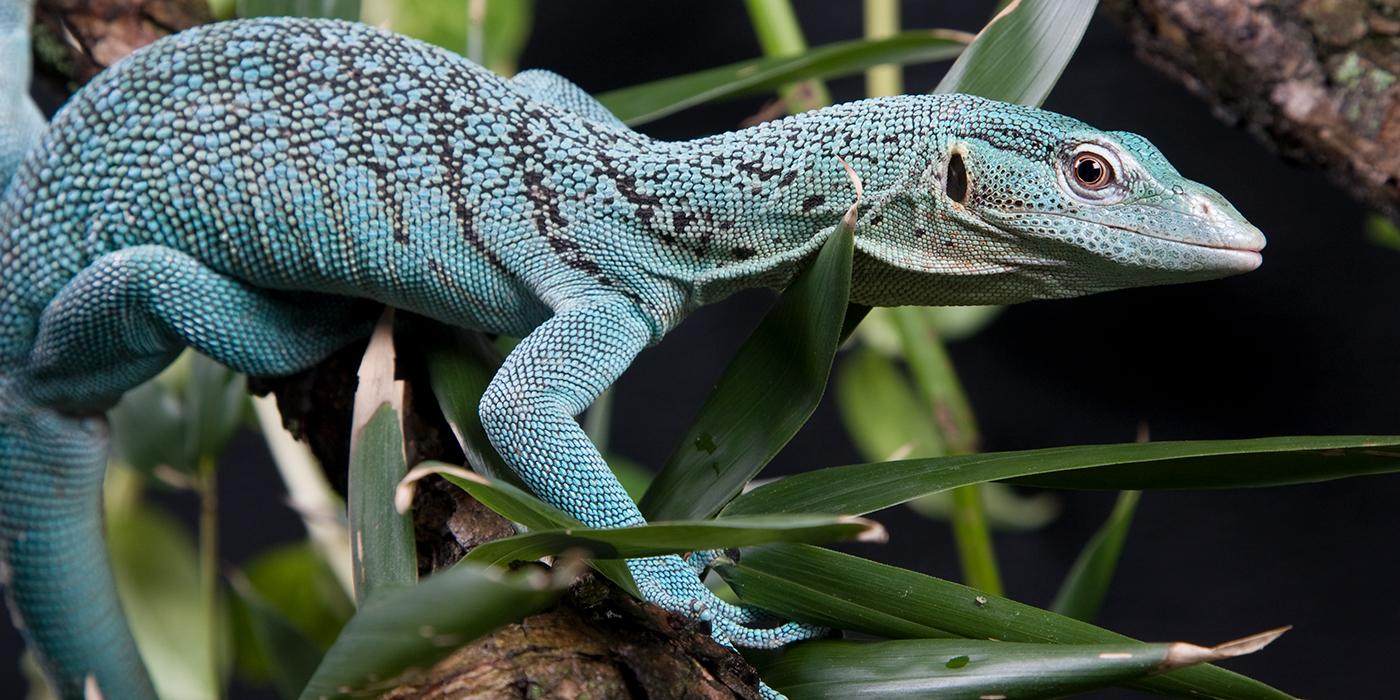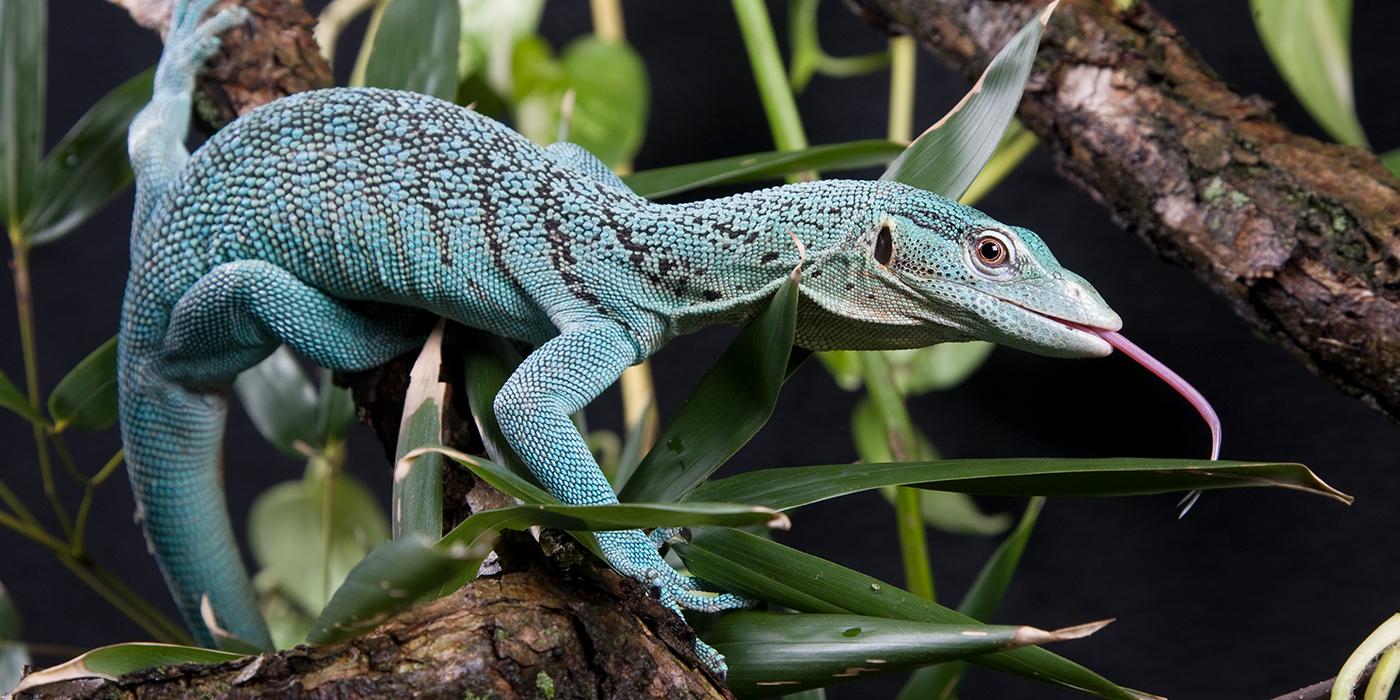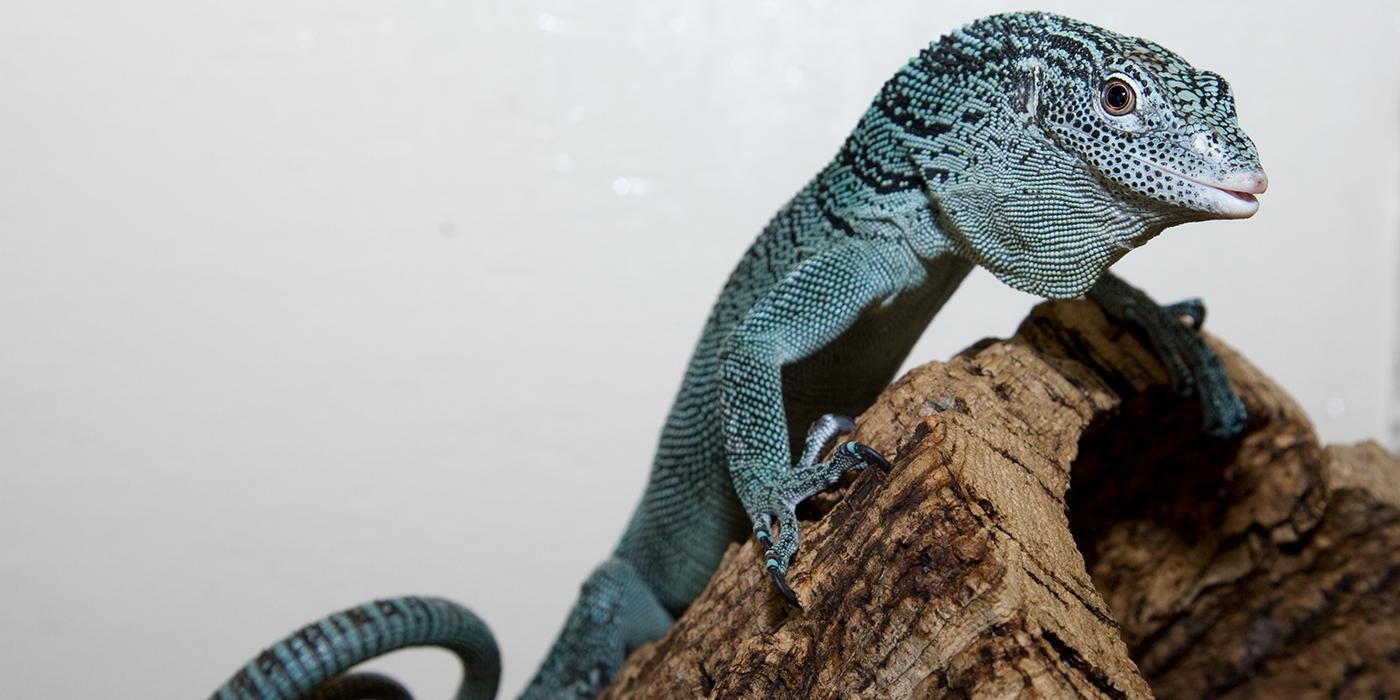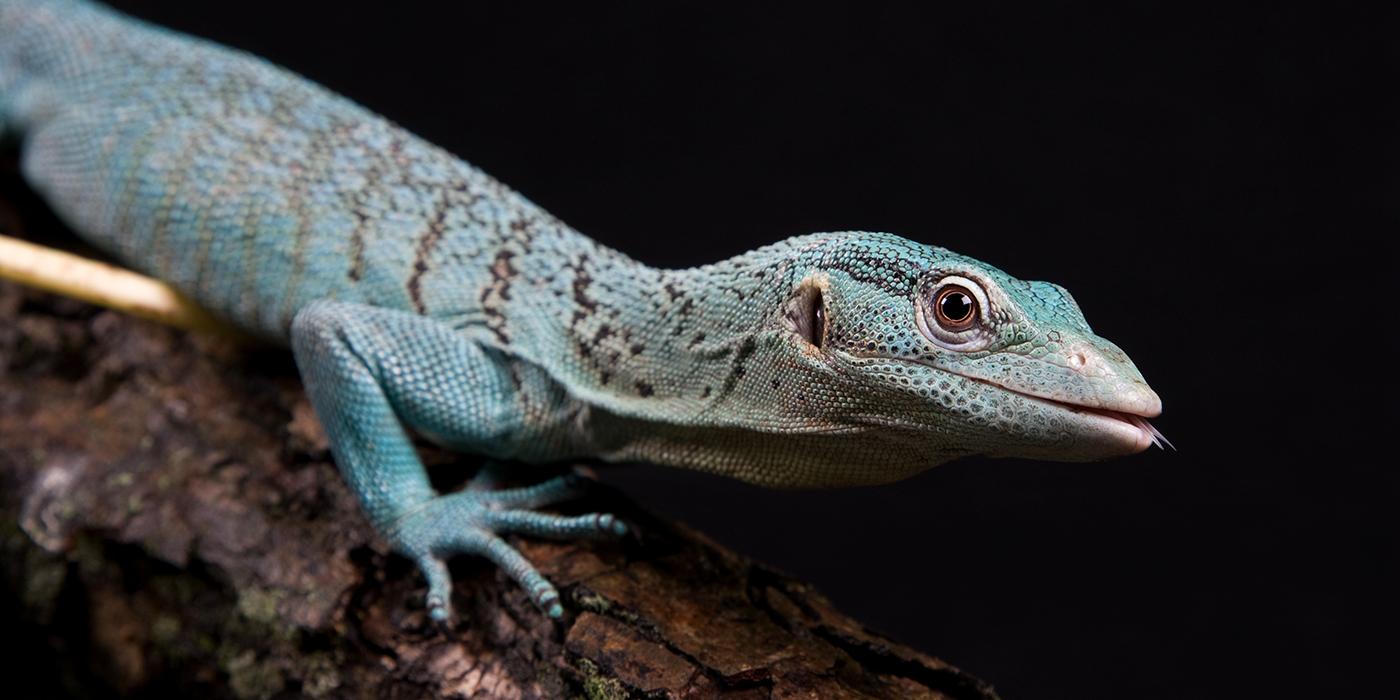Physical Description
Size
Native Habitat
Lifespan
Food/Eating Habits
Social Structure
Reproduction and Development
Female green tree monitors reportedly use termite mounds as nesting chambers, because they serve as perfect incubators. Termites regulate the mound's temperature, providing ideal conditions. The mounds also offer protection from predators.
A tree monitor's clutch size is typically three to seven eggs, which have an incubation period of 164 to 165 days. Multiple clutches have been occasionally reported with females in human care. The young grow rapidly, increasing their weight by up to 400 percent during the first three months of life, and their length by 150 to 200 percent. Both males and females reach reproductive maturity by age 2, although young males tend to grow faster than females and attain greater overall size.
Conservation Efforts
Emerald tree monitors are protected under Indonesian law and likely occur in protected reserves within their native range. The species appears to be adaptable and can survive on plantations or in modified habitats, as long as some trees and prey items are available.
They have no significant threats in the wild and are present in the pet trade around the world where they appear to be well-managed through captive breeding programs. Wild populations of green tree monitors are not presently exploited by the pet-trade practice, and it is unlikely that the rate of future collection would pose a significant threat to the species.
Help this Species
Be a smart consumer, and check the ingredients label. More than 50 percent of packaged foods, as well as many soaps, cosmetics and household products, contain palm oil. Always choose certified palm oil products that support sustainable production and prevent deforestation.
Choose your pets wisely, and do your research before bringing an animal home. Exotic animals don’t always make great pets. Many require special care and live for a long time. Tropical reptiles and small mammals are often traded internationally and may be victims of the illegal pet trade. Never release animals that have been kept as pets into the wild.
Share the story of this animal with others. Simply raising awareness about this species can contribute to its overall protection.
Smithsonian's National Zoo and Conservation Biology Institute. (n.d.). Emerald tree monitor. Retrieved December 1, 2025, from https://nationalzoo.si.edu/animals/emerald-tree-monitor
Animal News

Giant Panda Qing Bao Gets a Checkup ›

7 Spooktacular Animal Facts for Halloween ›




